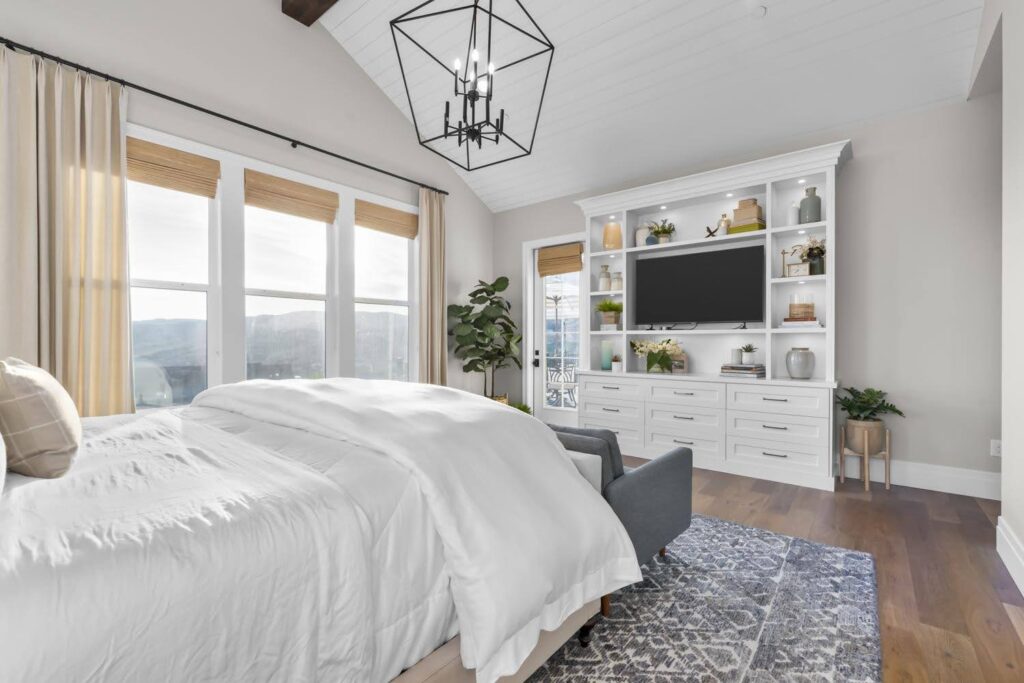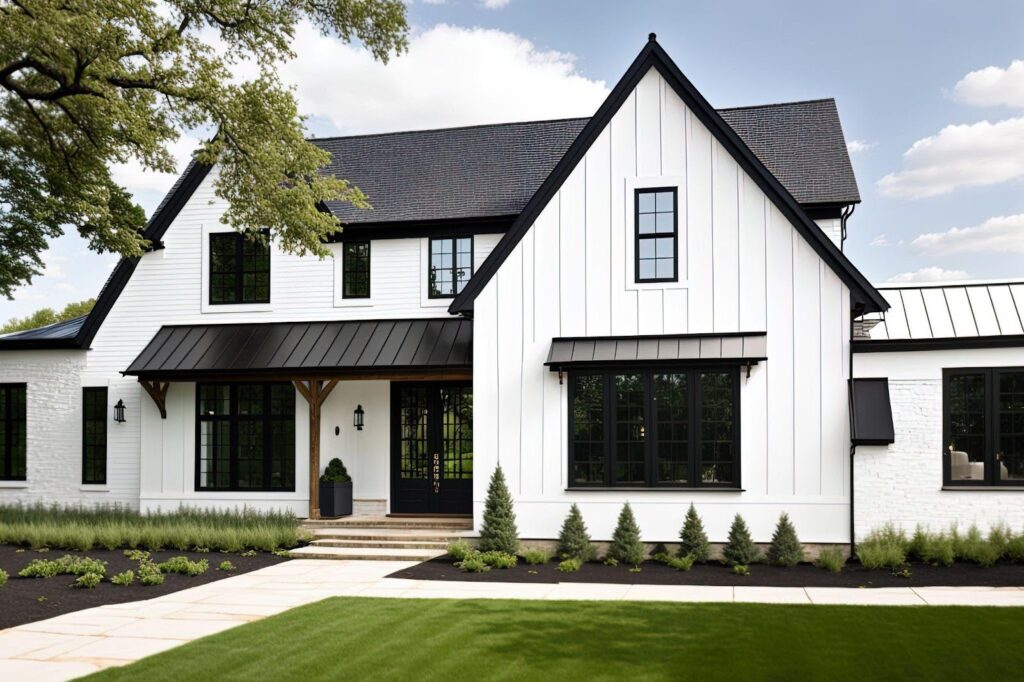Creating a custom home doesn’t have to break the bank. With proper planning, thoughtful decisions, and a focus on practicality, you can design your dream home without overspending.
Whether you’re a first-time builder or looking for a more cost-effective approach, these strategies will help you navigate building on a budget while achieving a beautiful and functional space.
Plan every detail before breaking ground
A well-thought-out plan is critical to staying on budget. Start with a clear vision for your custom home, including the number of rooms, layout preferences, and essential features. This step prevents costly changes during construction.
Work with a builder who understands your financial goals. Share your budget upfront and ask them to guide you toward affordable materials, labor options, and design elements. Keeping everyone on the same page ensures fewer surprises later.
Prioritize the features that matter most
Decide where you want to allocate your resources. Focus on the features that will provide the most value and comfort. For example, consider reducing the square footage in less-used areas like formal dining rooms or guest spaces if a large kitchen is important.
Avoid adding unnecessary bells and whistles that inflate the cost. Instead, invest in durable materials and energy-efficient systems that pay off over time. Prioritizing these essentials will help you stick to your goal of building on a budget.
Choose a simple and efficient design
Elaborate layouts or architectural features increase labor costs and material waste. Opt for a straightforward floor plan that minimizes complexities. Open-concept spaces and rectangular designs typically cost less to construct and maintain.
Limit intricate rooflines, expensive trims, or excessive customizations. Keeping the design simple doesn’t mean sacrificing style. A skilled designer will know how to create a home that looks polished without the added expense.
Build up instead of out
Adding a second story is often more cost-effective than expanding horizontally. A vertical layout requires less foundation work and uses land efficiently, which may save money if your lot size is limited.
Think carefully about how you’ll use each space. Multi-purpose rooms make a smaller footprint feel larger. With the right furniture choices, a den can double as a guest room, reducing the need for extra square footage.
Shop smart for materials
You don’t need top-of-the-line materials in every part of your custom home. Mix high-end and budget-friendly options to balance aesthetics and cost. For example, choose premium countertops for the kitchen while opting for more affordable flooring in secondary bedrooms.
Explore alternatives to popular materials. Instead of hardwood floors, consider laminate or vinyl planks that mimic the same look at a fraction of the price. Local suppliers often have discounted overstock materials or sales that helps you stretch your budget further.
Save money by timing your project right
The timing of your construction affects labor costs and material availability. Starting your project during slower seasons, like winter, may reduce expenses since builders often lower rates to fill their schedules.
Order materials well in advance to avoid paying inflated prices due to shortages or rush delivery fees. By staying ahead of potential delays, you keep your project on track and save money on building a home.
Reduce energy costs with smart choices
Energy-efficient features lower utility bills and reduce your home’s long-term operating costs. Insulated windows, proper weatherproofing, and energy-efficient appliances are investments that make a big difference over time.
Solar panels, LED lighting, and programmable thermostats are other options to consider. While some of these upgrades may seem expensive upfront, they provide significant savings in the long run, helping offset initial costs.
DIY where it makes sense
Take on manageable tasks to save on labor costs. Painting walls, landscaping, or installing light fixtures are projects you can handle without professional help. Make sure you’re realistic about your skills and time, though. Poorly done DIY work may lead to costly repairs later.
For larger tasks requiring permits or advanced skills, hire licensed professionals. This ensures safety, quality, and compliance with local building codes.
Choose pre-designed or modular options
Custom doesn’t always mean starting from scratch. Pre-designed plans or modular components offer customizable options at a lower cost. Many builders provide semi-custom packages where you adjust layouts and finishes while keeping the core design intact.
Modular construction methods streamline the building process by assembling off-site sections, reducing labor time and material waste. These options help you save while still achieving a personalized result.
Keep utility placement simple
The placement of utilities significantly impacts construction costs. Avoid relocating plumbing, electrical, or HVAC systems unless necessary. Keeping bathrooms and kitchens close together reduces the need for extensive piping or wiring.
Plan your layout carefully to make the most of existing connections. For example, placing a laundry room near the kitchen simplifies plumbing installations and saves money on building a home.

Negotiate contracts and seek multiple bids
Never settle for the first estimate. Gather bids from multiple contractors to compare costs and find the best value. Make sure you understand what’s included in each bid to avoid hidden fees or unexpected expenses.
Negotiate terms to secure favorable pricing on labor and materials. Experienced builders often have relationships with suppliers that allow them to source discounted items, so ask about these options during your discussions.
Don’t rush through decision-making
Making hasty decisions leads to costly mistakes. Spend time researching materials, finishes, and design options. Consult with professionals who specialize in building on a budget. Their advice helps you avoid unnecessary spending while achieving your vision.
Create a detailed timeline and stick to it. Delays caused by indecision or last-minute changes lead to increased costs, so staying organized is essential.
Embrace flexibility and compromise
Flexibility helps you adapt to unexpected challenges without exceeding your budget. For example, if a particular material becomes too expensive, explore alternatives that achieve a similar look and function.
Compromising on non-essential features allows you to allocate resources toward more important areas. Focus on what matters most for your lifestyle instead of chasing trends that inflate costs.
Take advantage of tax credits and rebates
Check for government programs offering incentives for energy-efficient homes. Many states and municipalities provide rebates for solar installations, insulation upgrades, or efficient appliances. These credits reduce upfront expenses and help you save money on building a home.
Ask your builder about any local programs that apply to your project. Staying informed about available benefits helps you take full advantage of these savings opportunities.
Invest in quality where it counts
Cutting corners in critical areas often leads to expensive repairs later. Invest in a solid foundation, high-quality insulation, and durable roofing materials. These components form the backbone of your custom home and ensure it stands the test of time.
Choosing well-made products in key areas prevents future headaches and adds long-term value to your investment.
Consider resale value
Even if you’re not planning to sell soon, consider how your custom home will appeal to future buyers. Neutral finishes, functional layouts, and timeless designs attract more interest and strengthen your investment.
Avoid overly specific or trendy features that may limit the home’s appeal. A budget-friendly design doesn’t have to compromise resale potential when you focus on versatile elements.
Track every expense and stay organized
Create a detailed budget before construction begins and track every expense throughout the process. Break it down into categories like materials, labor, permits, and unexpected costs. Staying on top of your spending prevents surprises and keeps you within your target.
Use budgeting apps or spreadsheets to monitor progress in real time. This transparency ensures you’re always aware of where your money is going.
Work with a trusted builder
A reliable builder who understands your priorities makes a big difference. Look for professionals with experience in building on a budget. Check references, read reviews, and visit previous projects to ensure they deliver quality work at a fair price.
Open communication is key. Regular updates and honest discussions help keep the project on track and aligned with your financial goals.
Final thoughts on saving while building your custom home
Building a custom home on a budget requires careful planning, smart decisions, and a willingness to stay flexible. By focusing on the essentials, exploring cost-effective options, and working with the right team, you can achieve a home that fits your vision and your wallet.
Stick to these strategies, and you’ll create a space tailored to your needs without overspending.

Build your dream home on a budget with Patterson Homes
Building a home can feel overwhelming, but with the right partner, it becomes straightforward and stress-free. Patterson Homes stands out as your trusted expert, offering unmatched guidance, reliability, and a commitment to helping you build a home that fits your needs and budget.
From selecting a cost-effective layout to exploring smart design options that maximize value, Patterson Homes ensures every decision is informed and tailored to your financial goals. They help you balance affordability with quality, ensuring your home is beautiful and practical.
With Patterson Homes, you’re not simply building a structure; you’re creating a space where memories will flourish. They’re here to help you craft a home that enhances your lifestyle while keeping expenses in check.
Contact Patterson Homes today and start building the home you’ve always wanted — on a budget that works for you.

